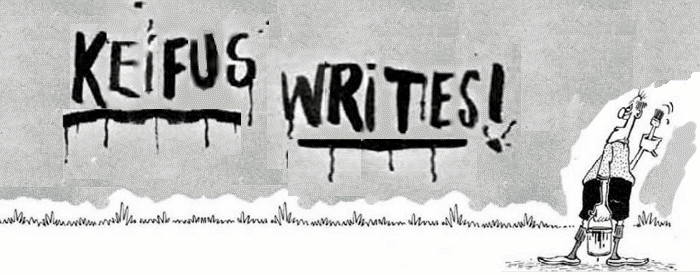Review: Teranesia, by Greg Egan
I read Diaspora by Greg Egan ten years ago, which was filled with the sort of speculative geometry (if you can believe such a thing--from low-dimensional thinking beings to the challenges of navigating a universe with a few extra directions in which to move) that would have been a fine followup Feynman's real-life physics of geometrical transformations. I dug through the shelves and came up with what looked like the next-best thing, another Egan novel that I bought at the same time, but Teranesia, I soon discovered, gets down with speculative biological juju instead of funny math, doesn't really follow the physicist at all. And so I've been forced to change this month's reading theme to "books with insects on the covers." It's not like it's an exact science.
The plot of Teranesia is half discovery, and half family story. We are introduced to a nine-year-old Prabir Suresh as he accompanies his parents and baby sister to live on a remote Indonesian island (to which Prabir has felt compelled to claim some ownership, naming it Teranesia) to research a recently-discovered species of butterfly. Although the family is isolated, their existence is known through contact with the closest inhabited island, and Prabir's (foolish) online correspondences. The local revolutionary politics catches up to them just enough for tragedy, and Prabir spends the middle of the book escaping from the island, from a refugee camp, from idiot relatives, protecting his sister from these environments, and generally cultivating a bounty of shame and guilt. It's a decade later, and also quite late in the book, when his sister decides to return to Teranesia to chase some more recent biological finds, and Prabir chases after her, coming to grips with his own past, as well as rooting out the mysteries his parents were just beginning to uncover.
Egan's scientific ideas are out there (it's fiction!), almost certainly extending past the plausible, but characteristically for this author, they're based on some of the loopier ideas in actual science. In Teranesia, Egan imagines some accelerated evolutionary mechanism at play that goes beyond the slow, generational processes of natural selection. The butterflies and other organisms, Prabir hypothesizes, have somehow begun selectively expressing ancient genes, long buried in their junk DNA, to best adapt to their new (and changing) environment. (Prabir has become a banker, a quant naturally, but has remained remarkably well-read in the normal family trade. In the islands, he latches onto an independent biologist, who, the reader must assume, is doing most of the investigative brain-work.) With a speed of progress that only happens in plot devices, a rogue protein is soon discovered by another research team, which interferes in the transcription process in normal cell reproduction. The going theory by novel's end is that the protein is somehow implicating DNA in quantum computation, sampling eigenstates for an optimum biological reality before wave function collapse. The various scientist characters have the good grace to find this frustrating.
This faster evolution doesn't treat Prabir very well, but he complains often enough about the limits of evolutionary reality that we can call it something of a theme. Prabir is depressed about his mere genetic destiny, and digs up some rationalizations about even the biological utility of a Darwinian conscientious objector, depressing him further. Egan (who is Australian) makes a fair stab at political reality, both in terms of Indonesian politics, the operations of a diffused war, and in Australia's lackluster support for the refugee community. The brief highlight of the Indian Rationalists Association is mildly interesting and doesn't threaten any American sensibilities. By the time the story does get to North America, however, he has made up a gang of liberal (as in "arts") academics that is just irritating. It's not that you can't make fun of the jargon-babbling lit-crit and gender studies crowd, but you need things like humor and accuracy if you're going to pull that sort of thing off. Beating on straw people isn't classy.
And here's the thing: it's hard to write well. I get that Egan's an idea man, a computer scientist before he was a writer, and that's fine, but the failures here are primarily artistic ones. His storytelling aspires to competence, which sets him way ahead of Diaspora (though behind some of his short fiction), and certainly ahead of any hypothetical novel I could churn out, but if all he had here was Prabir's chase scenes and character development, I'd have a hard time finding anything to say about it at all. Whenever I have read this guy, only his scientist characters ever manage to approach a third dimension, and then, only when they're working. His prose and pacing are adequate, but with the occasional abrupt breaks, leaden metaphors, and general awkwardness of an adolescent stylist. As creative writing, it's solidly okay, in other words, and maybe under the circumstances, he could find better villains than people who study the arts. Maybe he should be listening to them.

No comments:
Post a Comment